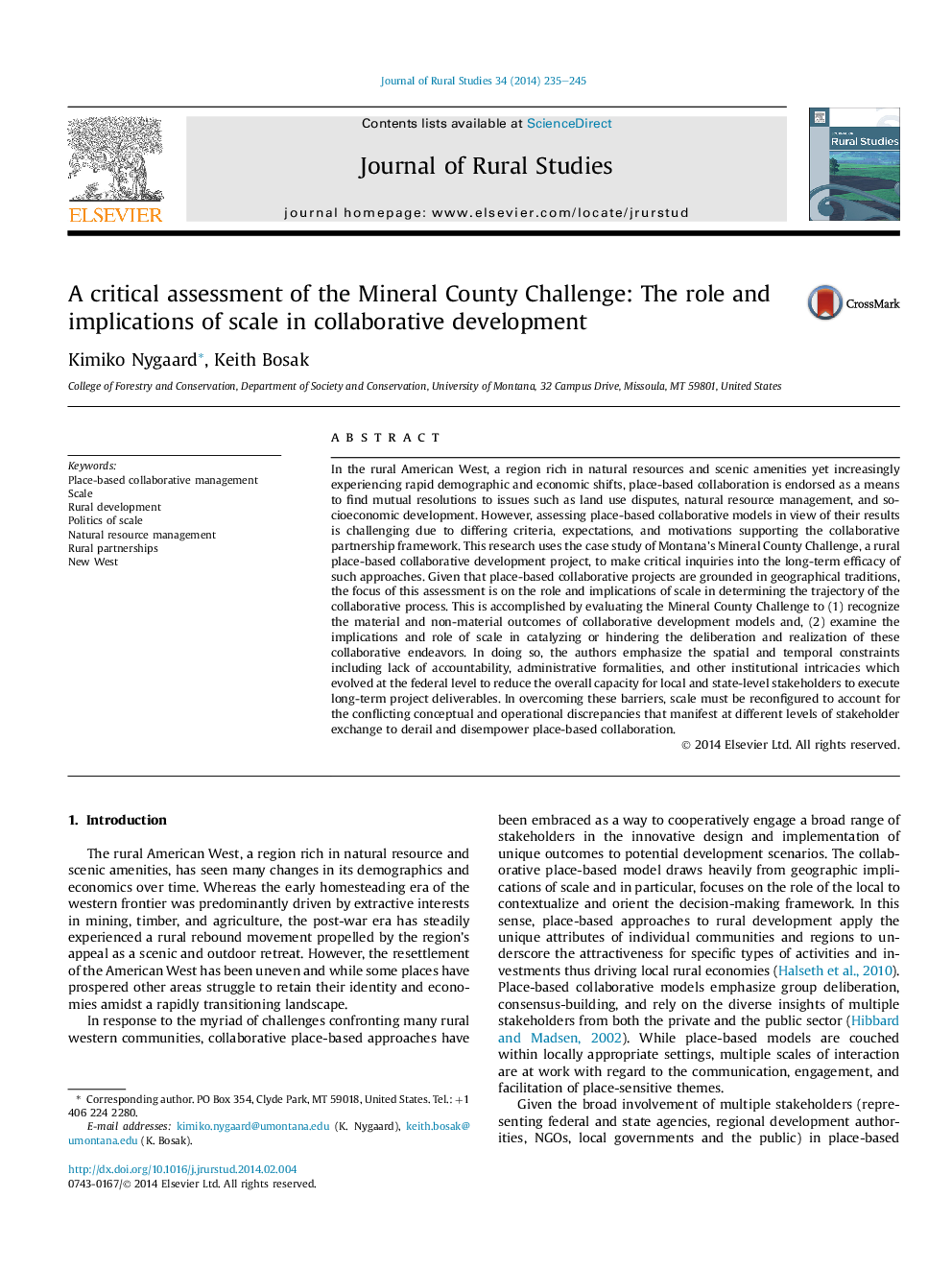| Article ID | Journal | Published Year | Pages | File Type |
|---|---|---|---|---|
| 6545831 | Journal of Rural Studies | 2014 | 11 Pages |
Abstract
In the rural American West, a region rich in natural resources and scenic amenities yet increasingly experiencing rapid demographic and economic shifts, place-based collaboration is endorsed as a means to find mutual resolutions to issues such as land use disputes, natural resource management, and socioeconomic development. However, assessing place-based collaborative models in view of their results is challenging due to differing criteria, expectations, and motivations supporting the collaborative partnership framework. This research uses the case study of Montana's Mineral County Challenge, a rural place-based collaborative development project, to make critical inquiries into the long-term efficacy of such approaches. Given that place-based collaborative projects are grounded in geographical traditions, the focus of this assessment is on the role and implications of scale in determining the trajectory of the collaborative process. This is accomplished by evaluating the Mineral County Challenge to (1) recognize the material and non-material outcomes of collaborative development models and, (2) examine the implications and role of scale in catalyzing or hindering the deliberation and realization of these collaborative endeavors. In doing so, the authors emphasize the spatial and temporal constraints including lack of accountability, administrative formalities, and other institutional intricacies which evolved at the federal level to reduce the overall capacity for local and state-level stakeholders to execute long-term project deliverables. In overcoming these barriers, scale must be reconfigured to account for the conflicting conceptual and operational discrepancies that manifest at different levels of stakeholder exchange to derail and disempower place-based collaboration.
Related Topics
Life Sciences
Agricultural and Biological Sciences
Forestry
Authors
Kimiko Nygaard, Keith Bosak,
